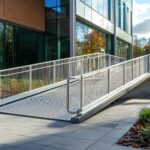
As part of our ongoing Employee Spotlight series showcasing the expertise within Charles Taylor, we sat down with Nick Andersen, a Forensic Engineer on our Engineering Technical Services team with more than 17 years of experience.
Based in New England, Nick has worked on projects ranging from historic properties to modern developments, applying his investigative skills to understand and resolve complex structural issues.
In this interview, he shares how his early background in construction shaped his career, the unique challenges of working in New England, and the trends he’s seeing in forensic structural analysis today.
Our Conversation with Nick Andersen
Question: What sparked your interest in structural and forensic engineering?
Nick Andersen: I grew up in a family of builders and spent much of my early life on construction sites. My fascination with how structures are designed naturally evolved into wanting to understand why they sometimes fail. Forensic engineering allows me to investigate structures, assess their condition, and determine the causes of failure. Each project is unique, and I enjoy the problem-solving aspect.
Q: How long have you worked in New England, and what do you appreciate most about it?
NA: I began my professional career with a firm in Western Massachusetts in 2008, but construction has been part of my life since childhood. New England offers a remarkable variety of structures, from historic 18th-century buildings to modern high-rises. The engineering community here is collaborative and takes building science and the region’s environmental challenges seriously.
Q: What unique challenges does New England’s climate and building history present?
NA: Historic building stock often means unconventional conditions. It is not unusual to find structures built on hemlock stumps or buildings that evolved from barns or other outbuildings over centuries. Older construction methods, such as rough log joists, board-framed walls, and rubble stone chimneys, can be complex to analyze. Climate factors like freeze-thaw cycles, variable snow loads, and aging timber framing add further complexity.
Q: What are the most common construction issues you encounter?
NA: Settlement is a frequent concern, sometimes linked to historic site conditions like former dump sites, mill sluiceways, or reclaimed wetlands. Many older buildings have also undergone numerous alterations over the decades, with retrofits for plumbing, electrical, and mechanical systems sometimes compromising structural integrity. Moisture intrusion is another ongoing challenge, particularly with newer materials that require more precise detailing than older methods provided.
Q: What professional qualifications do you hold?
NA: I am a licensed Professional Engineer in 17 states, including all of New England, New York, New Jersey, Pennsylvania, and Maryland. I also hold a Massachusetts Construction Supervisor’s license, a Massachusetts Soil Evaluator’s license, and I am a LEED Accredited Professional.
To learn more about Charles Taylor’s Engineering Technical Services, contact us.


